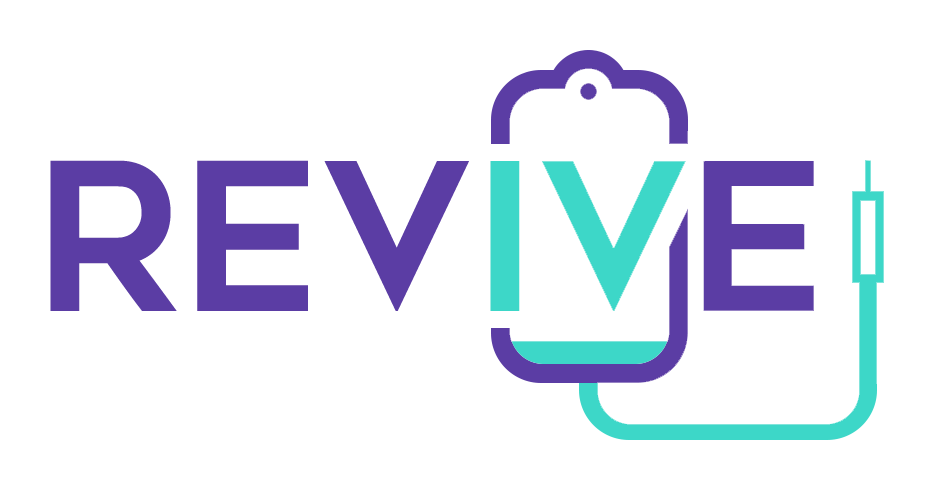Questions? click here to call
Combat Migraines and Headaches with IV Therapy: A Comprehensive Guide
Combat Migraines and Headaches with IV Therapy: A Comprehensive Guide

Migraines and headaches can be debilitating, preventing individuals from enjoying their daily lives. Traditional treatments may not always provide the relief needed, leading many to seek alternative therapies. One such option gaining attention is intravenous (IV) therapy. This comprehensive guide will explore the connection between migraines, headaches, dehydration, and the promising role of IV therapy in alleviating symptoms.
Understanding Migraines and Headaches
The Science Behind Migraines
Migraines are complex neurological conditions characterized by intense, debilitating headaches often accompanied by nausea, vomiting, and sensitivity to light and sound. The precise cause of migraines remains unclear, but they are believed to stem from a combination of genetic, environmental, and neurological factors. Neurotransmitters such as serotonin and dopamine play a substantial role in triggering migraine attacks.
During a migraine, the levels of these neurotransmitters fluctuate, causing blood vessels in the brain to swell and eventually lead to the severe pain associated with the condition. Identifying triggers—like stress, hormonal changes, or certain foods—can help individuals manage their migraines more effectively. Additionally, research has shown that lifestyle factors such as sleep patterns, hydration levels, and physical activity can significantly influence the frequency and severity of migraine episodes. Keeping a migraine diary can be a useful tool for individuals to track their symptoms and identify potential triggers, allowing for more personalized management strategies.
Different Types of Headaches
Headaches can be broadly classified into two categories: primary and secondary headaches. Primary headaches are standalone conditions, such as migraines, tension-type headaches, and cluster headaches. Conversely, secondary headaches are symptoms of another underlying issue, such as sinus infection or head trauma.
- Migraines: Intense pain, often on one side of the head, accompanied by other symptoms.
- Tension-type headaches: Dull, aching pain, often associated with tightness in the neck and shoulders.
- Cluster headaches: Severe pain localized around one eye, occurring in cyclical patterns.
In addition to these primary types, there are also other less common headache disorders that can significantly impact an individual's quality of life. For instance, hemiplegic migraines can cause temporary paralysis on one side of the body, mimicking stroke symptoms, while rebound headaches may occur from overuse of pain relief medications. Understanding these variations is crucial for effective treatment, as each type of headache may respond differently to various therapeutic approaches. Moreover, ongoing research continues to explore the underlying mechanisms of these headaches, paving the way for innovative treatments that could offer relief to those who suffer from chronic headache disorders.
The Role of Dehydration in Migraines and Headaches
How Dehydration Triggers Migraines
Dehydration is a common trigger for both migraines and tension headaches. When the body lacks adequate fluid intake, blood volume decreases, leading to reduced oxygen and nutrient delivery to the brain. This can, in turn, precipitate a migraine attack.
Research has shown that people experiencing migraines tend to have a higher likelihood of dehydration. Replenishing fluid levels may not only help relieve headache symptoms but can also prevent future episodes.
The Link Between Dehydration and Tension Headaches
Tension headaches are often linked to stress and muscle tension but can also be exacerbated by dehydration. When the body is dehydrated, it tends to retain more tension in the muscles. This heightened muscle tightness can result in tension-type headaches.
Staying well-hydrated has been recognized as an effective strategy for reducing the frequency and severity of these headaches, underscoring the importance of maintaining adequate hydration levels.
Introduction to IV Therapy
The Basics of IV Therapy
IV therapy involves administering fluids, vitamins, and minerals directly into the bloodstream via a vein. This method ensures rapid absorption and greater bioavailability compared to oral supplements, making it a potentially effective solution for restoring hydration and alleviating headaches.
IV therapy can be tailored to meet individual needs, incorporating a mix of electrolytes, hydration solutions, and even medications specifically aimed at managing headaches and migraines.
Benefits of IV Therapy
One of the primary benefits of IV therapy is its ability to quickly rehydrate the body, which is crucial for migraine and headache relief. Additional advantages include:
- Immediate Relief: IV therapy delivers fluids and nutrients directly into the bloodstream, often resulting in faster symptom relief.
- Customizable Treatments: Each IV bag can be customized to target specific symptoms, enhancing the effectiveness of the treatment.
- Enhanced Nutrient Absorption: Since IV therapy bypasses the digestive system, nutrients are absorbed much more efficiently.
IV Therapy for Migraines and Headaches
How IV Therapy Works for Migraines
When it comes to migraines, IV therapy can play a significant role in alleviating symptoms through hydration and administering specific medications. Solutions can include anti-nausea medications, anti-inflammatory drugs, and migraine-specific treatments. By combining these treatments in a single IV infusion, many individuals report a marked improvement in their migraine symptoms.
Additionally, replenishing essential nutrients such as magnesium can further help mitigate migraine occurrences, as magnesium deficiency has been linked to increased headache frequency.
IV Therapy for Tension Headaches
For those suffering from tension headaches, IV therapy may also provide significant relief. By addressing dehydration and delivering relaxing minerals like magnesium and B vitamins directly into the bloodstream, patients can often experience a reduction in tension levels and accompanying headache pain. Moreover, a well-hydrated body can alleviate muscle tension in the neck and shoulders, which often contributes to tension headaches.
What to Expect During IV Therapy
The IV Therapy Process
The process of receiving IV therapy typically involves a brief consultation with a medical professional who will assess your symptoms and hydration levels. Following this, an IV line will be inserted into a vein, and the customized solution will be slowly administered.
Sessions usually last between 30 minutes to an hour, during which patients can relax, read, or even listen to music. Many patients find the experience calming and rejuvenating.
Possible Side Effects of IV Therapy
While IV therapy is generally safe, some individuals may experience mild side effects, including:
- Minor discomfort at the injection site
- Inflammation or bruising
- Possible allergic reactions to specific nutrients
It is crucial to discuss any concerns with the healthcare provider before undergoing IV therapy, ensuring a clear understanding of the potential risks and benefits.
In summary, IV therapy presents a promising option for those struggling with migraines and headaches, particularly when coupled with a comprehensive understanding of hydration's role in headache management. With personalized care and targeted treatments, individuals can take decisive steps towards a more comfortable and pain-free life.











